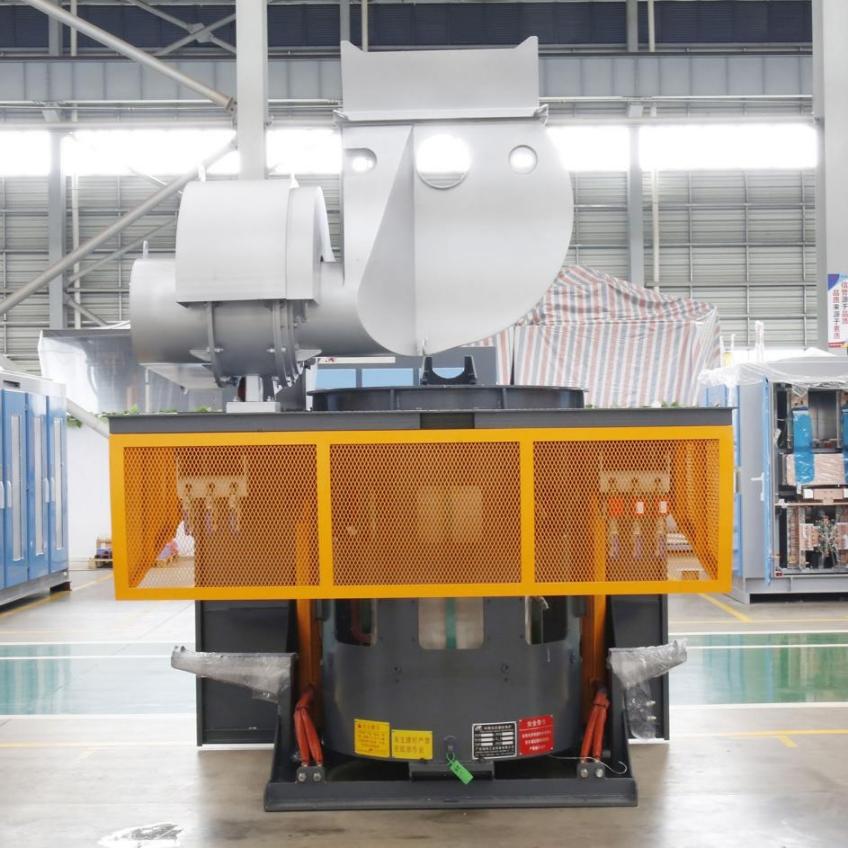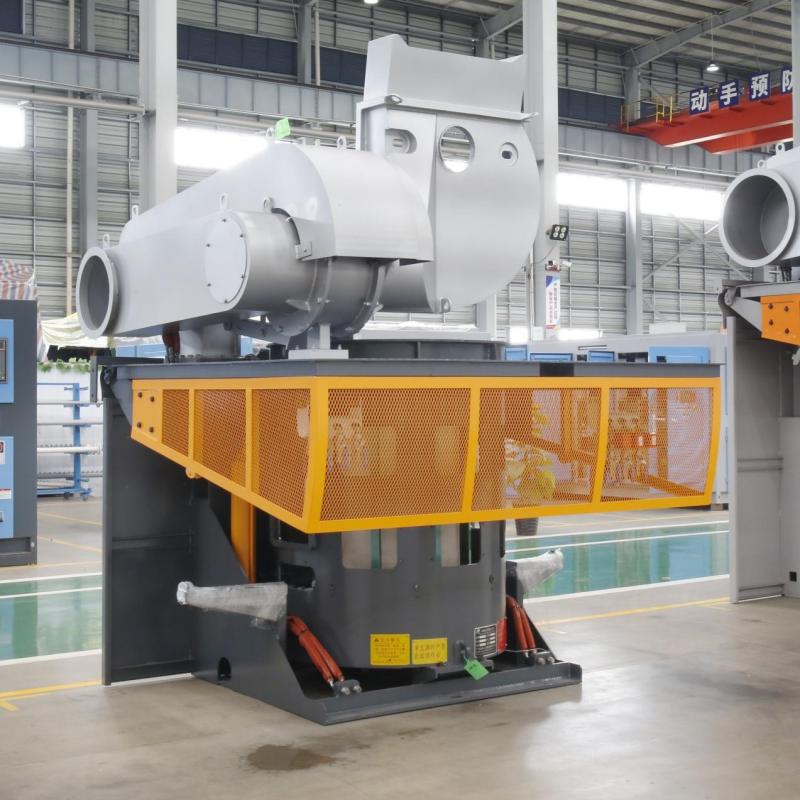
Magnetic Induction Heating System for Metalworking: An Essential Guide
Understanding Magnetic Induction Heating Systems: A Valuable Technology for Control Heating
The application of Magnetic induction heating system is changing the way we look at heating systems. Different from other heating techniques, this technology includes electromagnetic fields for heating materials with predetermined heat conductivity. Casting is a crucial aspect of current manufacturing industries since they are efficient, saves energy, and is incredibly flexible. Here is an article that provides all the details you require to learn about magnetic induction heating – its uses, advantages, and functionality.
What is Magnetic Induction Heating?
Magnetic induction heating is a non-contact heating process where electromagnetic energy is used to heat the selected material mostly a metal through inductance. In a package an oscillating magnetic field is created by an AC with a high frequency in a coil, currents named eddy currents originate inside the material. Such currents produce heat through the material’s electrical resistance and heat the product rapidly and evenly.
Core Components of an Induction Heating System
An induction heating system includes a few essential components, discussed below that contribute to efficient heating. These include:
• Induction Coil: The induction coil is used to develop the electromagnetic field that causes the eddy currents in the material. The geometry of the coil is essential because it defines the geometry of the heated workpiece: the coil mimics the shape of the workpiece to be heated.
• Induction Heating Power Supply: The source of power offers the flow of electricity to the coil, and transforms the current into high frequency and alternating current known as AC which is otherwise used to induce the process.
• Induction Heating Controller: The controller controls the power supply and has features such as frequency, mains, and power for accurate and regulated heating.
• Induction Heating Equipment: The system necessary for the induction process is represented by all the required hardware, starting from coils to cooling systems, to guarantee safety and efficiency.
How Does Magnetic Induction Heating Work?
Magnetic induction heating is based on quite a simple principle as follows; here’s a step-by-step breakdown of how it works:
Electromagnetic Field Generation: The induction coil follows the principle of electrical alternating current supply, and produces a constantly changing magnetic field.
Induced Eddy Currents: If a conductive material, such as a metal, is immersed in a magnetic field. The strength of the magnetic field then changes the current flowing through the material, which is called an eddy current.
Heat Generation: Here, the eddy currents pass through the material and experience some resistances thus producing heat. It will dissipate on the surface of the material, depending on the type of material and frequency of use. It spreads better into deeper surface areas.

Precise Heating: Induction heating is very different from conventional heating techniques. Because one can easily set the heating temperature and heating time of the workpiece, this heating method provides very uniform heating. And it does not consume a lot of energy.
Key Applications of Magnetic Induction Heating
MIHS presents a wide utility in many application areas making it the go-to choice in many industries. Some of the most common applications include:
Induction Hardening
Induction hardening entails the use of heat to increase the surface hardness of the metals, particularly steel. High-frequency induction heating involves selective heating of the top layer of a metal and then rapidly cooling it to create a high-wear surface layer. It is a common technique applied widely in the automobile production line and production industry in general.
Induction Melting
Induction melting is an application used in heating metals for purposes of casting, alloying, or refining. This process affords highly efficient and controllable heating, MIM is being used in industries such as steel, aluminum, and precious metal industries.
Induction Forging
Similar to lost foam casting, induction heating is also adopted in the forging industry where metals are heated to high temperatures prior to forging. This process is cheaper, faster, and less energy-demanding than the previous conventional methods of production.
Advantages of the Magnetic Induction Heating Systems
In this regard, the application of a magnetic induction heating system has numerous impressive benefits, which would make it suitable for many fields. Here are some key benefits:
Energy Efficiency
Induction heating is one hundred percent more efficient than conventional heating equipment. This is because the heat is produced within the material hence no external heating is needed which minimizes energy use and heat wastage.
Precise Temperature Control
Temperature and heating time are the aspects of induction heating that are most affected. And they can be controlled more accurately than other similar methods. This makes it very suitable for processes that require heating or cooling curves. Or even processes that require every part of the product to be heated to the same temperature or not heated at all.

Reduced Heat Loss
Unlike other conventional heating methods where heating involves the two main methods of conduction and convection, in induction heating only the material is heated. This results in power savings and increased efficiency in speed throughout the processor.
Faster Heating Time
A lot of advantages are possible only due to the application of induction heating: high speed of heating that shortens the time needed for the hardening, brazing, and forging. This enhances the general productivity and effectiveness of process industries.
Clean and Eco-Friendly
Induction heating is a clean process that does not utilize combustion. Therefore, using induction heating is economical for the environment. This also decreases the use of other heating appliances and thus minimizes hazardous gaseous emissions to the atmosphere.
Induction Heating System Design and Optimization
A magnetic induction heating system is therefore capable of affecting its performance depending on the design used. Key considerations include:
• Induction Coil Design:The coil size must also be appropriate for the workpiece. In order to distribute the heat evenly on the workpiece.
• Power Supply and Frequency: The kind of power supply necessary for heating has to be chosen according to the requirements in heating, the material being used, and the depth of heat penetration.
• Cooling Systems: Heating systems that utilize induction heating may at times necessitate the use of cooling arrangements to avoid an excessive amount of heat generation in other parts of the system.
In addition, there are custom induction heating systems. They are used in processes such as metal forming, aerospace and automotive, and even in the medical field. Induction heating systems can be adjusted for specific operations. This means that customers can get a customized solution based on their needs.
Future Trends in Induction Heating
Induction heating is expected to have good growth and prospects in the coming period. Because the industry’s focus on energy-saving and automated machinery will continue to increase. Therefore, in the future, due to the development of power electronics, control systems and coils. Induction heating systems will be more efficient and can be applied to a wider range of materials and fields.
Conclusion
Magnetic induction heating system represents a powerful, energy-efficient solution for a wide range of industrial applications. From hardening and brazing to melting and forging, these systems provide precise, rapid heating with minimal energy consumption. As industries continue to innovate, induction heating is likely to become even more integral to modern manufacturing processes. To explore more about magnetic induction heating and its applications, visit Rongke. Whether you’re looking for industrial, commercial, or laboratory induction heating systems, we have the right solutions to meet your needs.




